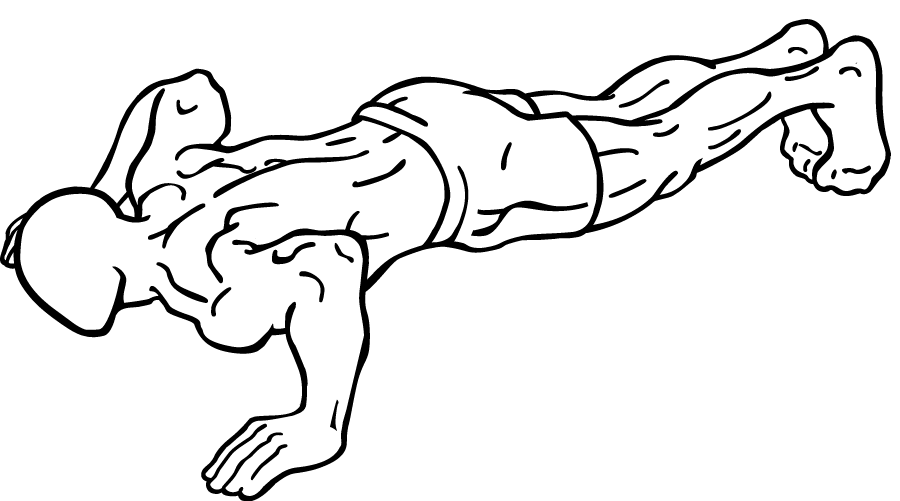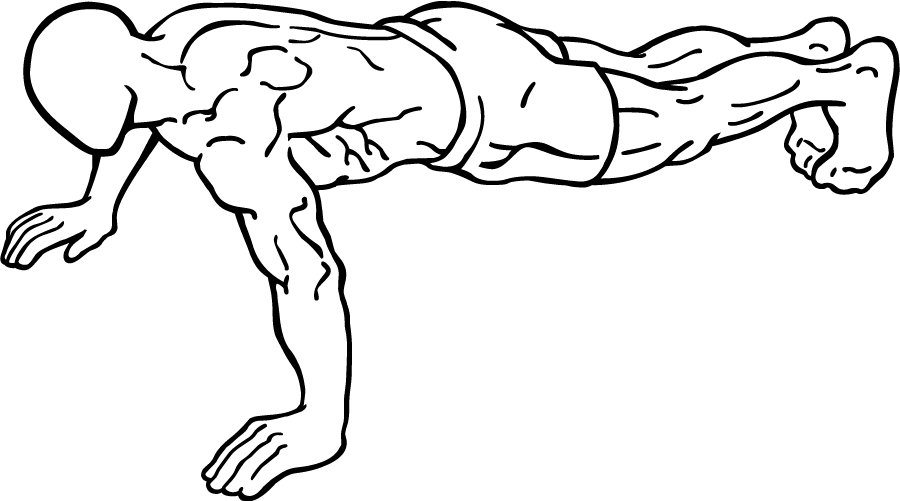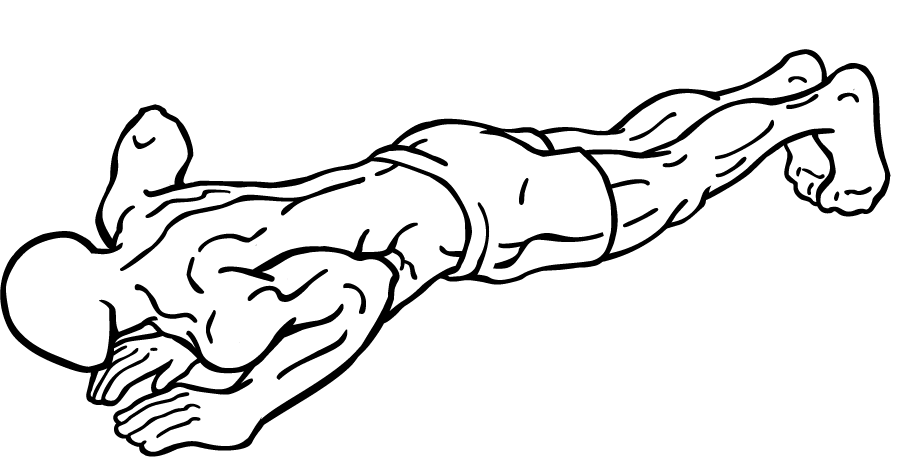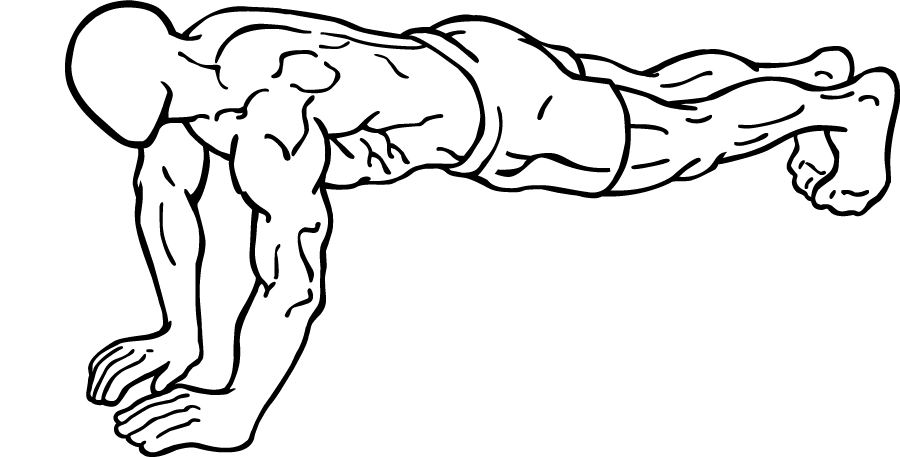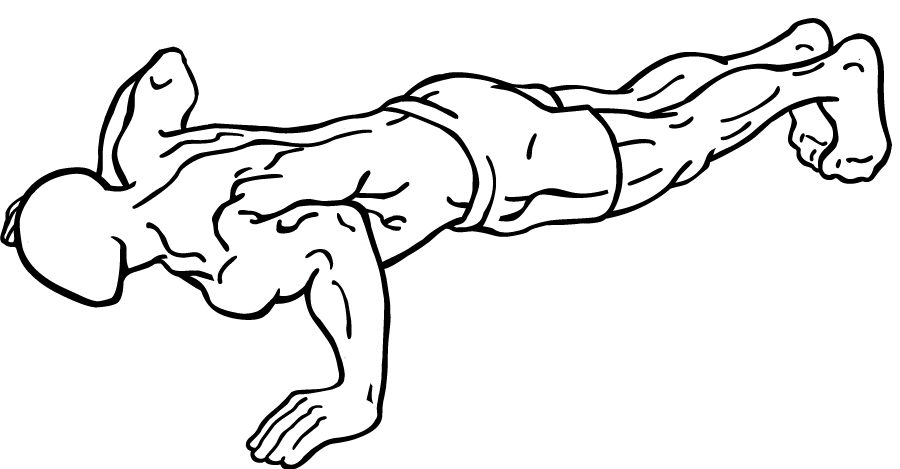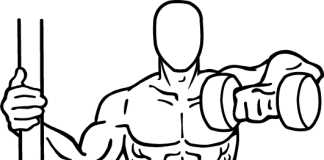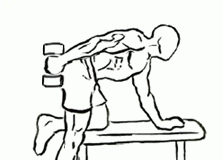Last Updated on September 26, 2014
Push-ups are a foundational exercise, known for their simplicity and effectiveness in building strength in the chest, arms, and core. But when it comes to targeting specific muscles, small adjustments to hand positioning—like close and wide grip variations—can make a big difference. These two push-up variations allow you to emphasize different parts of the upper body, with the close grip push-up focusing on the triceps and inner chest, and the wide grip push-up targeting the chest more broadly, especially the outer pecs.
In this guide, we’ll explore the benefits of both close and wide grip push-ups, break down the steps for each variation, discuss common mistakes, and provide tips on integrating these movements into your workout for maximum upper body strength and definition.
Why Close and Wide Grip Push-Ups Are Effective
Both close and wide grip push-ups are variations that add versatility to your workout, allowing you to target different areas of the upper body. Here’s why each version is effective:
- Close Grip Push-Ups:
- Targets Triceps: With a narrower hand position, close grip push-ups place more emphasis on the triceps, helping to build arm definition and strength.
- Engages Inner Chest: This variation shifts the focus to the inner chest, helping develop a more balanced, well-defined chest.
- Increases Core Stability: The narrow hand position requires additional core engagement to maintain alignment, promoting better core strength.
- Wide Grip Push-Ups:
- Emphasizes Outer Chest: Placing your hands wider than shoulder-width increases activation in the outer chest, enhancing width and shape.
- Less Stress on Elbows: The wider hand position reduces strain on the elbows, making it a shoulder-friendly alternative for those with elbow concerns.
- Boosts Shoulder Strength: This version involves the deltoids more, particularly the front delts, which aids in overall upper body development.
Muscles Targeted in Close and Wide Grip Push-Ups
Both variations work multiple muscle groups, but each one targets certain muscles more specifically:
- Chest (Pectorals): Both push-up variations engage the chest, with close grip focusing on the inner chest and wide grip on the outer chest.
- Triceps: Close grip push-ups place greater emphasis on the triceps, making it a go-to exercise for arm strength.
- Shoulders (Deltoids): Wide grip push-ups engage the shoulders more, providing stability and supporting the pressing motion.
- Core Muscles (Rectus Abdominis, Obliques): Both variations require core engagement to stabilize the body, helping develop core strength and endurance.
Step-by-Step Guide to Close Grip Push-Ups
Step 1: Set Up Your Position
- Start Face Down on the Floor: Begin by lying face down on the floor or a mat with your feet together, your body aligned in a straight line.
- Position Your Hands in a Close Grip: Place your hands under your chest with your thumbs and index fingers touching to form a triangle or diamond shape. This narrow placement focuses on the triceps and inner chest.
Step 2: Engage Core and Position Your Body
- Engage Your Core: Pull your belly button toward your spine to tighten your core. This will help keep your body straight and prevent your lower back from sagging.
- Align Your Head and Neck: Keep your head in a neutral position, looking slightly ahead rather than up or down. This alignment prevents neck strain and maintains proper body posture.
Step 3: Perform the Push-Up
- Lower Yourself Down: Inhale as you bend your elbows, bringing your chest down toward your hands. Keep your elbows close to your body to target the triceps.
- Press Back Up: Exhale as you push through your palms to straighten your arms, raising your body back to the starting position. Focus on using your triceps and inner chest muscles to power the movement.
Step 4: Repeat
- Maintain Form: Continue for the desired number of repetitions, focusing on controlled movements and steady breathing. Avoid letting your back arch or sag during each rep.
Step-by-Step Guide to Wide Grip Push-Ups
Step 1: Set Up Your Position
- Start Face Down on the Floor: Begin in the same starting position as the close grip push-up, lying face down on the floor or a mat.
- Position Your Hands in a Wide Grip: Place your hands wider than shoulder-width apart. This positioning shifts more of the workload onto your chest, especially the outer pecs.
Step 2: Engage Core and Position Your Body
- Engage Your Core: Draw your abs in toward your spine to stabilize your body and keep it aligned from head to heels.
- Align Your Head and Neck: Keep your head neutral, looking slightly forward to maintain a straight line from your head to your feet.
Step 3: Perform the Push-Up
- Lower Yourself Down: Inhale as you bend your elbows, lowering your chest toward the floor. Keep your elbows flared out at about a 45-degree angle from your body to engage the chest effectively.
- Push Back Up: Exhale as you press through your palms to return to the starting position. Focus on using your chest muscles for a smooth, controlled push.
Step 4: Repeat
- Maintain Form: Perform the desired number of reps, focusing on a steady, controlled motion. Avoid letting your hips sag or your back arch excessively during each repetition.
Tips for Perfecting Your Form
Maintaining good form is essential for maximizing the benefits of both push-up variations and avoiding injury. Here are some tips:
- Keep Your Core Engaged: A tight core stabilizes your body and prevents your hips from sagging, which can cause lower back strain.
- Don’t Rush the Movement: Perform each rep slowly and with control. Avoid bouncing at the bottom or pushing up too quickly, as this reduces muscle activation.
- Align Your Elbows: In close grip push-ups, keep elbows close to your body to focus on the triceps. In wide grip push-ups, keep elbows at about a 45-degree angle for optimal chest engagement.
- Breathe Properly: Inhale as you lower yourself and exhale as you push back up. Proper breathing aids control and endurance.
Common Mistakes and How to Avoid Them
To get the most out of close and wide grip push-ups, avoid these common mistakes:
- Sagging Hips: Allowing your hips to drop reduces core engagement and puts stress on your lower back. Keep your core tight and your body in a straight line.
- Flaring Elbows in Close Grip Push-Ups: Flaring your elbows out reduces triceps activation and places unnecessary stress on the shoulders. Keep elbows close to your sides.
- Shallow Reps: Lowering only partway reduces the range of motion, limiting muscle engagement. Aim to bring your chest close to the ground for full reps.
- Arching the Lower Back: Arching the back can strain the spine. Maintain a neutral spine by engaging your core and avoiding excessive forward or backward movement.
Variations of Close and Wide Grip Push-Ups
Adding variety to your push-up routine can help challenge your muscles differently and prevent plateaus. Here are some effective variations:
1. Elevated Close Grip Push-Ups
Place your hands on an elevated surface (like a bench or step) to reduce the intensity, making it easier for beginners or those with wrist concerns. This variation still targets the triceps and inner chest effectively.
2. Decline Wide Grip Push-Ups
Elevate your feet on a bench or box, increasing the intensity and focusing on the upper chest and shoulders. This advanced variation adds resistance, challenging the upper body further.
3. Weighted Push-Ups
Place a weight plate on your back while performing either close or wide grip push-ups. This added resistance builds additional strength and increases the difficulty of each variation.
4. Plyometric Close Grip Push-Ups
Push yourself up explosively from the ground in a close grip push-up and try to clap your hands before landing. This explosive movement enhances power and fast-twitch muscle fiber engagement in the triceps and chest.
5. Wide Grip Push-Ups on Stability Ball
Place your hands on a stability ball in a wide grip position. This requires greater balance and core engagement, adding a stabilization challenge to the traditional wide grip push-up.
Sample Upper Body Workout Incorporating Close and Wide Grip Push-Ups
Here’s a balanced upper body workout that includes both push-up variations to target the chest, shoulders, and triceps:
- Warm-Up: 5-10 minutes of dynamic stretching, focusing on the shoulders, chest, and arms.
- Close Grip Push-Ups: 3 sets of 12-15 reps, focusing on tricep and inner chest activation.
- Wide Grip Push-Ups: 3 sets of 12-15 reps, targeting the outer chest and shoulders.
- Dumbbell Bench Press: 3 sets of 8-10 reps to build overall chest and shoulder strength.
- Overhead Tricep Extension: 3 sets of 10-12 reps for focused triceps engagement.
- Lateral Raises (Dumbbells): 3 sets of 12-15 reps to strengthen the shoulders.
- Cool Down: Light stretching for the chest, triceps, and shoulders to promote flexibility and recovery.
Cool Down
After completing the workout, take a few minutes to perform a gentle cool-down routine to help your muscles relax and improve flexibility:
- Chest Stretch: Stand near a wall or doorframe, extend one arm, and gently press forward to stretch your chest. Hold for 20–30 seconds on each side to relieve any tension in the chest muscles.
- Tricep Stretch: Raise one arm overhead, bend at the elbow, and use your opposite hand to gently pull your elbow backward. This stretch targets the triceps and helps relieve tightness. Hold for 20–30 seconds per arm.
- Shoulder Stretch: Bring one arm across your body and use your opposite hand to gently pull it toward your chest. This stretch targets the shoulders, which are highly engaged in both push-up variations. Hold for 20–30 seconds per side.
- Cat-Cow Stretch (for Core and Spine): Get on all fours and alternate between arching your back up (cat pose) and dropping your belly down (cow pose). This dynamic stretch improves spine mobility and gently stretches the core, which is engaged during push-ups. Perform for 1–2 minutes.
- Child’s Pose: Kneel on the floor, extend your arms forward, and sit back onto your heels. This position stretches the lower back and shoulders and helps calm the body after an intense workout. Hold for 1 minute, focusing on slow, deep breaths.
Progressive Overload Techniques for Push-Up Variations
To continue building strength and muscle with close and wide grip push-ups, apply progressive overload by:
- Increasing Repetitions: Start with a rep range you’re comfortable with (e.g., 8–12) and gradually increase the number of reps as you build endurance and strength.
- Adding Weight: Use a weight vest, place a plate on your back, or have a partner apply light pressure on your upper back. This added resistance increases difficulty, promoting strength and muscle growth.
- Slowing Down the Tempo: Increase time under tension by lowering your body more slowly (3–5 seconds on the way down). This requires more control, engages the muscles deeply, and challenges the upper body and core.
- Performing More Sets: Add an additional set as your endurance improves. For example, increase from 3 to 4 sets for a higher training volume, which is beneficial for muscle growth.
- Incorporating Decline Variations: Elevate your feet on a box or bench to make the push-up more challenging, as this shifts more of your body weight onto your upper body. Decline variations target the upper chest and shoulders more intensely.
- Trying Plyometric Push-Ups: For advanced lifters, plyometric push-ups (like clapping push-ups or explosive push-ups) add a power element, recruiting fast-twitch muscle fibers and increasing upper body strength.
Integrating Close and Wide Grip Push-Ups into Different Workouts
These push-up variations are highly adaptable and can be included in various training styles:
- Chest Day: Use them as warm-up exercises to activate the chest muscles before moving into heavier bench presses or chest-focused exercises.
- Arm Day: Include close grip push-ups to isolate and target the triceps alongside other arm-focused exercises.
- Upper Body Day: Combine close and wide grip push-ups with shoulder, chest, and tricep exercises for a balanced upper body workout.
- Bodyweight or Functional Training: Close and wide grip push-ups fit seamlessly into bodyweight circuits or functional workouts, as they require no equipment and promote upper body endurance and strength.
- Endurance Training: Perform higher-rep sets of both push-up variations to build endurance in the upper body, enhancing overall muscular stamina.
Tracking Your Progress
To stay motivated and monitor your progress over time, keep track of the following:
- Reps and Sets: Record the number of reps and sets completed for each push-up variation. Gradually increasing reps and sets reflects gains in endurance and strength.
- Form and Technique: Take notes on your form improvements, such as better core stability or reduced elbow flaring. Improved form is a great indicator of muscle adaptation.
- Time Under Tension: Track any increases in the time taken to perform each rep. Slower, controlled reps mean you’re developing greater strength and muscle control.
- Advanced Variations: As you progress, track when you introduce weights, plyometric moves, or decline push-ups into your routine. This demonstrates strength gains and adds variety to your workouts.
Frequently Asked Questions (FAQs)
1. How do close and wide grip push-ups differ from regular push-ups?
- Regular push-ups place your hands shoulder-width apart, distributing the workload across the chest, triceps, and shoulders evenly. Close grip push-ups emphasize the triceps and inner chest, while wide grip push-ups target the outer chest and shoulders.
2. Can I do close and wide grip push-ups every day?
- While push-ups can be done frequently, it’s important to allow recovery, especially if you’re working at higher intensities. Aim for 2-3 times per week, with at least a day of rest in between for muscle recovery.
3. How deep should I go in close and wide grip push-ups?
- Aim to lower your chest close to the floor without touching it. Maintaining a full range of motion maximizes muscle engagement and effectiveness. Only go as low as you can while maintaining proper form.
4. Are these push-up variations safe for beginners?
- Yes, but beginners may need to modify by performing the push-ups on their knees or using an elevated surface to reduce resistance. Focusing on form first will help build strength safely.
5. Which variation is better for shoulder strength?
- Wide grip push-ups engage the shoulders more, particularly the front delts, making them slightly more shoulder-focused. However, both variations benefit shoulder stability and strength.
Final Thoughts
Close and wide grip push-ups are powerful, adaptable exercises that provide unique benefits for the chest, triceps, shoulders, and core. With close grip push-ups emphasizing the triceps and inner chest, and wide grip push-ups focusing on the outer chest and shoulders, these variations offer a balanced approach to upper body development. By incorporating them into your workouts, practicing proper form, and applying progressive overload, you can improve strength, build definition, and achieve a well-rounded, powerful upper body.
Whether you’re training at home or in the gym, close and wide grip push-ups are invaluable tools for both beginners and advanced athletes alike. Embrace the versatility of these push-up variations to enhance your fitness routine, challenge your muscles in new ways, and bring yourself closer to your strength and physique goals. With consistency and focus, these variations can help transform your upper body and elevate your workout game.
